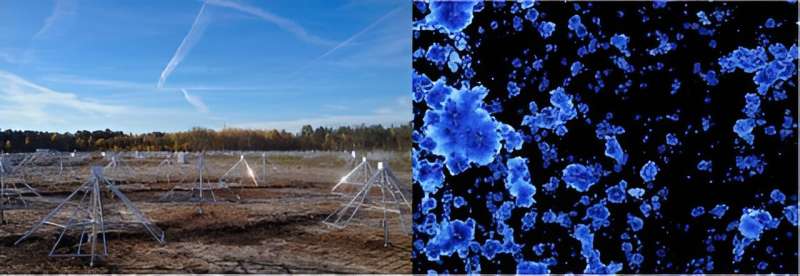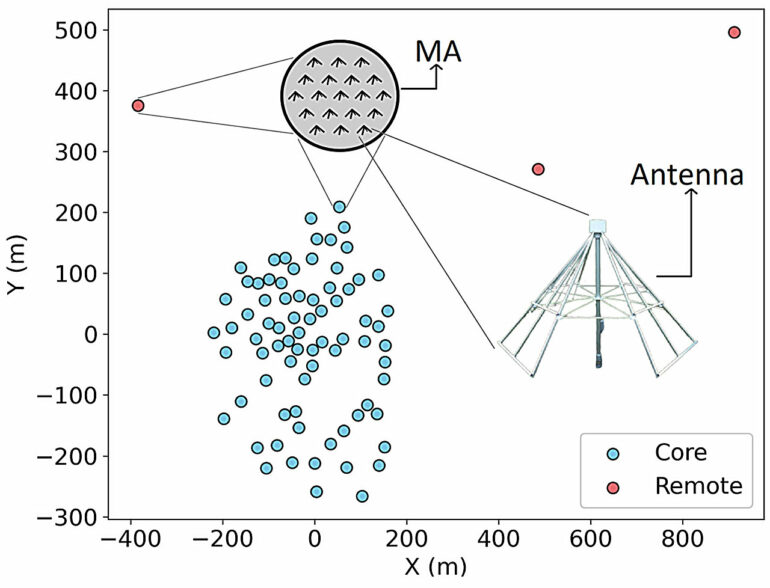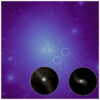The NenuFAR Cosmic Dawn project has taken an important step in the exploration of the Cosmic Dawn, this key period in our universe marked by the formation of the first stars. An upper limit on the amplitude of the neutral hydrogen fluctuations at 21 cm from this distant time was established using the NenuFAR radio telescope. This advance represents a crucial step in our efforts to unravel the mysteries of the first stars formation.
The recent study, published in the journal Astronomy & Astrophysics, analyzes one night of observation of the North Celestial Pole deep field with the NenuFAR radio telescope, providing new limits on the fluctuations of the transition line at 21 cm from neutral hydrogen. These observations will help to study the conditions of formation of the first stars, approximately 180 million years after the Big Bang, a key epoch in the evolution of the universe.
NenuFAR, a low-frequency radio interferometer located at the Nançay Radioastronomy Observatory in France, is distinguished by its large collecting surface, making it exceptionally sensitive for observing the 21 cm signal from the Cosmic Dawn. Observing this signal is complex due to signal interferences from our galaxy and other celestial sources, which overshadow the weak signal from the Cosmic Dawn. The team implemented advanced techniques to try to isolate this signal.

On the left, the NenuFAR radio telescope, which will consist of 1938 antennas upon completion. On the right, a simulation of the 21 cm signal from the Epoch of Reionization, produced by the LICORICE software. The NenuFAR Cosmic Dawn project aims to detect and study this signal for a better understanding of the early universe. © Paris Observatory
These advances mark significant progress towards understanding the Cosmic Dawn. However, this is only a first step and many challenges remain to directly observe this signal. The team continues to improve its analysis and observation methods, with the ultimate goal of directly observing the Cosmic Dawn.
More information:
S. Munshi et al, First upper limits on the 21 cm signal power spectrum from cosmic dawn from one night of observations with NenuFAR, Astronomy & Astrophysics (2023). DOI: 10.1051/0004-6361/202348329
Citation:
Cosmic dawn observational progress with NenuFAR (2024, January 16)



